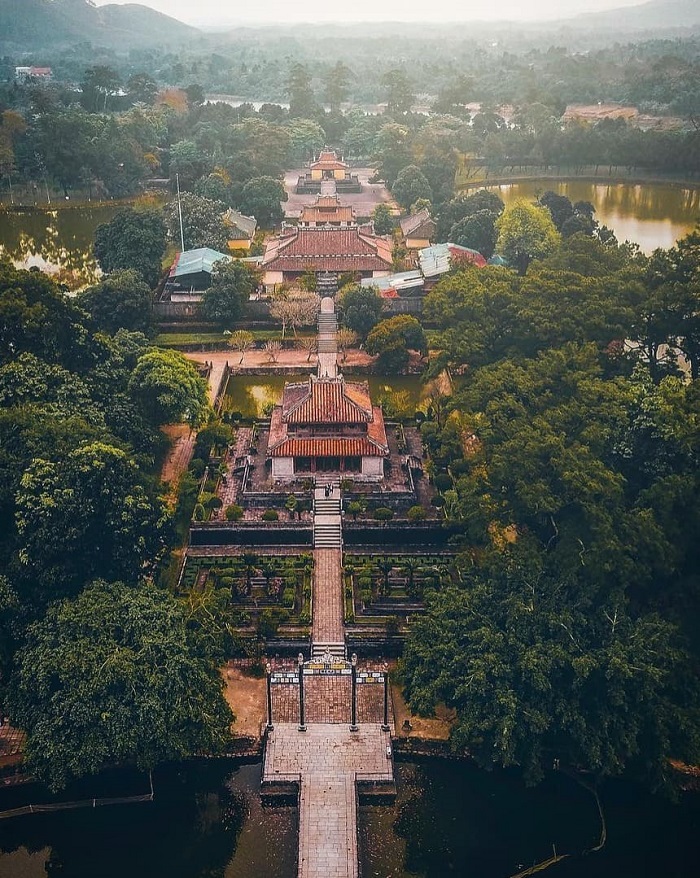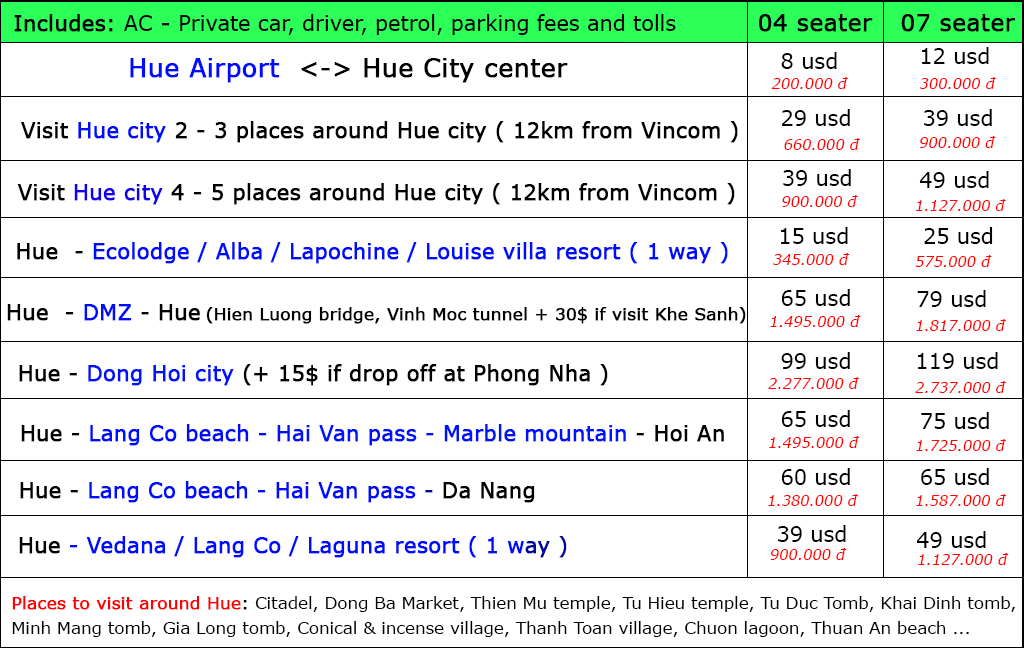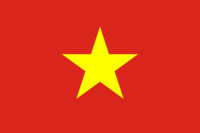Minh Mang Tomb in Hue – Exquisite Architecture and the Epitome of Nguyen Dynasty
Minh Mang Tomb in Hue leaves a lasting impression with its ancient traditional architecture, steeped in Confucian values. It is an enticing destination for travelers, offering insight into the art of tomb construction and the pivotal periods of Vietnamese history.

- Where is Minh Mang Tomb located, and how far is it from Hue City?
Minh Mang Tomb, also known as Hieu Lang, is situated on Cam Ke Mountain, Huong Tho Commune, Huong Tra Town, Thua Thien Hue Province, Vietnam. It is approximately 12 kilometers from the city center of Hue. The site boasts picturesque surroundings with mountains, rivers, and a tranquil ambiance.
- Overview of Minh Mang Tomb’s History and Architecture
2.1. Historical Background: Minh Mang ascended the throne in 1820 and made significant contributions to the nation’s reforms. He sought to construct a resting place, a haven to contemplate, and a final resting place for himself after passing away.
2.2. Architectural Excellence: Minh Mang Tomb spans approximately 18 hectares and encompasses 40 significant structures symmetrically arranged along three main axes, centered around the Thanh Dao path. Its layout resembles a person lying at ease, with the Kim Phung Mountain as the headrest and two lakes, Trung Minh, resembling outstretched arms, creating a tranquil atmosphere.
Prominent Sights Within Tomb of Minh Mang King
With its extensive complex and 40 structures, Minh Mang Tomb offers various captivating attractions. Here are seven highlights you should not miss: 3.1. Dai Hong Mon: Dai Hong Mon serves as the main gate, welcoming visitors into Minh Mang Tomb. It is an exquisite structure adorned with intricate carvings, featuring depictions of carp turning into dragons and dragon clouds. The gate is said to have opened only once to admit Emperor Minh Mang’s coffin and has remained sealed ever since.
3.2. Bai Dinh: Beyond Dai Hong Mon lies a spacious courtyard paved with Bat Trang ceramic tiles known as Bai Dinh. This area features statues of civil and military officials, stone elephants, and serves as the site of the Thanh Duc Thanh Cong Stele, inscribed by Emperor Thieu Tri to commemorate his father’s life and virtues.
3.3. Minh Lau: Minh Lau, meaning “Bright Pavilion,” rests atop Tam Dai Hill, surrounded by the Tho Garden filled with flowers. This two-story square building exudes a sense of tranquility, reflecting Confucian and philosophical ideals.
3.4. Tam Dien Area: Tam Dien comprises the Hieu Duc Mon and Sung An temples, dedicated to the worship of Emperor Minh Mang and Queen Thien Thanh Hau. Stepping into Tam Dien, visitors sense a spiritual and reverent atmosphere. Seventeen stone steps lead to Hoang Trach Mon, opening up to a peaceful expanse with lush greenery and serene lotus ponds.
3.5. Tan Nguyet Lake: Tan Nguyet Lake, or Crescent Lake, is the next stop on your journey, symbolizing a crescent moon embracing the sun, representing the interplay of forces shaping the universe.
3.6. Thong Minh Chinh Truc Bridge: After crossing Tan Nguyet Lake, you’ll encounter Thong Minh Chinh Truc Bridge, leading to Minh Lau. This charming bridge comprises 33 stone steps and harmoniously blends with nature.
3.7. Hien Duc Gate: Hien Duc Gate is part of the Tam Dien area, situated on a square piece of land symbolizing the Earth Deity. This sacred space exudes solemnity and antiquity.
Tips for Visiting Minh Mang mausoleum in Hue
To ensure a smooth and enjoyable visit to Minh Mang Tomb, consider the following tips:
4.1. Best Time to Visit: The best time to explore Minh Mang Tomb and Hue is during early spring, from January to February, when the weather is pleasant, with mild temperatures and minimal rainfall.
4.2. Getting There: You can reach Minh Mang Tomb from Hue’s city center by taxi or motorbike rental. Follow National Route 49 along the Perfume River until you reach Thuan An Town. Continue on the same road, and you will arrive at Minh Mang Tomb. Hue city visit by car

4.3. Entrance Fee and Opening Hours:
The entrance fee to Minh Mang Tomb is 150,000 VND per person. The tomb is open to visitors from 7:00 AM to 5:30 PM every day of the week, Monday through Sunday.
Minh Mang resting place in Hue offers a captivating journey into Vietnam’s rich history and architectural heritage, enveloped by serene natural beauty. Explore the harmonious blend of Confucian values and artistic craftsmanship, making it an enchanting destination for international travelers.
See more: Thien mu temple in Hue

